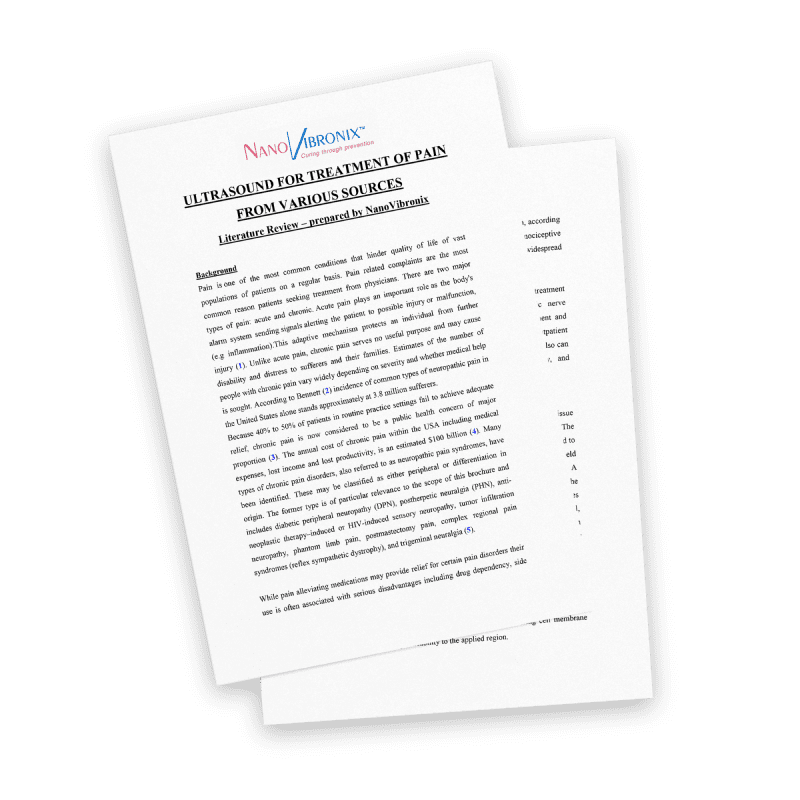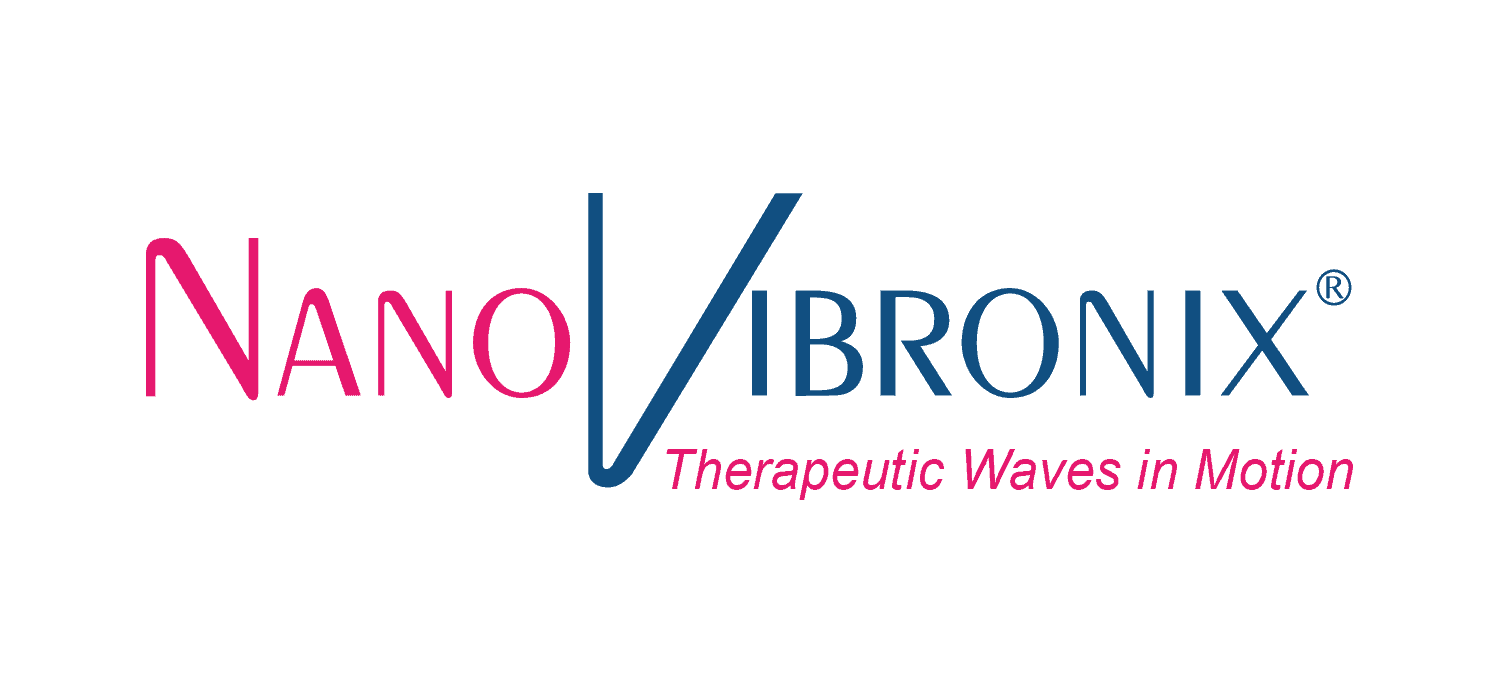Ultrasound for Treatment of Pain from Various Sources
September, 2014Dr. Dagan Harris, NanoVibronix

Enter Your Information Below to View this FREE Resource:
Along with receiving this free guide for treating pain, we will periodically send you updates and information about our products. We will never send any spam or too many emails.
Background
Pain is one of the most common conditions that hinder quality of life of vast populations of patients on a regular basis. Pain related complaints are the most common reason patients seeking treatment from physicians. There are two major types of pain: acute and chronic. Acute pain plays an important role as the body’s alarm system sending signals alerting the patient to possible injury or malfunction, (e.g inflammation). This adaptive mechanism protects an individual from further injury (1). Unlike acute pain, chronic pain serves no useful purpose and may cause disability and distress to sufferers and their families. Estimates of the number of people with chronic pain vary widely depending on severity and whether medical help is sought. According to Bennett (2) incidence of common types of neuropathic pain in the United States alone stands approximately at 3.8 million sufferers.
Because 40% to 50% of patients in routine practice settings fail to achieve adequate relief, chronic pain is now considered to be a public health concern of major proportion (3). The annual cost of chronic pain within the USA including medical expenses, lost income and lost productivity, is an estimated $100 billion (4). Many types of chronic pain disorders, also referred to as neuropathic pain syndromes, have been identified. These may be classified as either peripheral or differentiation in origin. The former type is of particular relevance to the scope of this brochure and includes diabetic peripheral neuropathy (DPN), postherpetic neuralgia (PHN), anti- neoplastic therapy–induced or HIV-induced sensory neuropathy, tumor infiltration neuropathy, phantom limb pain, postmastectomy pain, complex regional pain syndromes (reflex sympathetic dystrophy), and trigeminal neuralgia (5).

Ultrasound Therapy for Pain
PainShield® by NanoVibronix is a type of ultrasound therapy for pain that delivers fast pain relief for nerve and soft tissue damage.
- NO DRUGS
- NO SIDE EFFECTS
- NO SURGERY
- EASY TO USE
- SCIENTIFICALLY PROVEN
- AMAZINGLY FAST RESULTS
PainShield is applicable to treat both chronic and acute pain. PainShield may be used immediately post-injury and post-op. Patient benefits include its ease of application and use, faster recovery time, high compliance, safety, and effectiveness.
